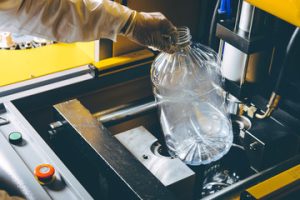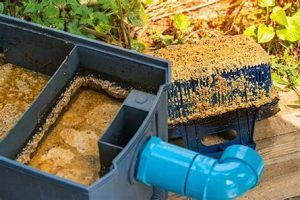From construction sites to music festivals, people gotta go and these portable restrooms are here to help. Historically, they were bulky and smelly, but technological advancements have changed all that.
Now, they’re lighter and cleaner with new innovations like non-formaldehyde blue odor neutralizer additive. These chemical-free deodorizers are safer for everyone! Read on Port A Potty Rental to learn more.

1. Convenience
Whether you’re a homeowner looking to add some privacy to your outdoor living space or an event organizer trying to make sure guests have access to convenient restroom facilities, portable toilets are an excellent choice. They’re also a cost-efficient solution for many events and construction projects. They eliminate the need for plumbing infrastructure and save on installation costs. They’re also a greener option, as they reduce water consumption and sewage waste.
Although most people are familiar with the basic porta potty, advances in technology have allowed for new models that offer more comfort and functionality. Some features include flushing systems, toilet seats with lids, and hand sanitizer dispensers. These innovations help ensure that guests have a clean, comfortable experience and feel confident using the toilet. Other conveniences include odor control and waste disposal, which are essential to a positive user experience.
While many of these advances are impressive, it’s important to remember that not all portable toilets are created equal. Choosing the right type of porta potty can significantly impact the quality of your event or construction project. This is why it’s essential to choose a vendor with a track record of quality, reliability, and customer support. Choosing a reputable company that provides timely cleaning and maintenance, as well as adequate number of units, can ensure your guests have the best possible experience at Clark Botanic Garden, on a job site in Mineola, or at an event near North Hempstead Beach Park.
The porta potty was first conceived during World War II, when shipyard workers needed an alternative to the outhouses they used. These portable cubicles were designed to give sailors a private toilet without making them leave their work stations, thus improving efficiency and productivity. They’ve since come a long way from their early fiberglass counterparts, offering countless improvements for sanitary use and convenience. Today’s portable toilets are a modern marvel of engineering, able to offer high-tech advantages such as remote monitoring apps and automatic cleaning systems that minimize human contact. They’re also equipped with eco-friendly features such as low-flush systems that reduce water consumption and sewage waste.
2. Cleanliness
A porta potty that’s not properly cleaned and maintained can quickly become a breeding ground for germs, which can make people sick. This makes regular cleaning and sanitation an essential part of maintaining a safe environment for guests using these facilities. Regular cleaning also helps prevent unpleasant odors that can detract from an event’s atmosphere and draw unwanted attention.
Typically, the first sign of an unclean porta potty is the smell. Then, the toilet may start to overflow with waste or sewage. In these cases, it’s important to clean the porta potty as soon as possible. Sanitation employees can empty the waste tank and disinfect the interior surfaces of the unit. They can also refill the water supply and sanitize any surface touchpoints that may be touched by guests.
In the past, the blue liquid in porta potties was a formaldehyde solution. However, since many states started outlawing the use of this carcinogen to protect wastewater treatment plants, companies now use a different solution that contains chemical biocides to kill bacteria and fragrances to mask odors. The result is that the blue liquid in a porta potty is actually greener than it was before!
Another important part of keeping portable restrooms clean is ensuring that basic necessities, such as toilet paper and hand sanitizer, are consistently stocked. Creating an inspection schedule that ensures these items are always available is an easy way to keep the bathrooms looking and smelling clean throughout an event.
Finally, emptying waste receptacles regularly can help prevent overflowing trash cans, which can attract pests and increase the risk of contamination. Additionally, recycling receptacles can promote an eco-friendly message to attendees and encourage more sustainable behavior at events.
Working with a portable restroom vendor that offers greener options is another great way to reduce the impact of your event on the planet. Options like low-flow flush systems and separate composting receptacles can have a significant effect when combined with a well-rounded waste management plan that includes clearly marked recycling and garbage receptacles.
3. Environmentally friendly
In many situations, indoor plumbing isn’t available, or it’s not a feasible option. The use of portable toilets helps to alleviate this problem. However, it’s important to understand that not all porta potties are created equal. Some are more eco-friendly than others, and choosing the right one can help align your event with your sustainability goals.
The first green aspect of a portable toilet has to do with waste disposal. When people use traditional restrooms, they flush their waste away from the bathroom and into the sewer system. This seeps into the natural environment and can harm animal life and plant growth. When used properly, a porta potty can prevent this from happening and protect the surrounding ecosystem.
Another way that eco-friendly porta potties benefit the environment is by using less water than their traditional counterparts. Regular toilets use up to three gallons of water per flush, but porta potties that feature environmentally-friendly flushing systems can cut this amount significantly. This helps to conserve this precious resource, and it’s especially helpful for events that expect large numbers of guests.
Finally, a porta potty can also help to protect the world’s water supply by keeping human waste contained. Without these facilities, people may relieve themselves on the ground, which can damage local plants and cause pollution. However, when people use portable toilets, their waste is kept in an enclosed container and treated with chemicals that minimize odors and bacterial contamination.
Additionally, many modern porta potties are made from recycled materials. This reduces the need for new, virgin plastics and helps to cut back on landfill waste. In addition, most of the supplies used in a porta potty—from toilet paper to sanitary wipes—can also be Earth-friendly, furthering your sustainability efforts. So, if you’re looking for an environmentally-friendly alternative to a traditional toilet, consider renting a portable restroom. It’s an easy way to make a big difference for the planet. Just make sure to clean up after yourself! Bacteria is everywhere, and it loves to latch onto objects like bags, coats, and hands. The more it gets on those items, the more likely it is to spread germs to other people and animals.
4. Convenient
Whether they’re at a packed event, construction site, or a campsite, people need convenient bathroom facilities. That’s where porta potties come in. Unlike traditional restrooms, which can require plumbing and be expensive to maintain, portable toilets can be delivered, cleaned, and stocked with supplies like paper towels and hand sanitizer. This makes them a cost-effective option for any location that lacks the space and infrastructure for a permanent restroom.
Plus, since they are portable, porta potties can be lined up beside each other to prevent long lines. And they’re also a great choice for locations that may be hard to access with regular toilets, such as a lakefront wedding or community run. These toilets are designed to be easy to use for all ages, making it possible for everyone to get in and out quickly.
Another reason to consider using porta potties is that they help reduce the spread of germs and bacteria. Although it’s common to think that sharing a seat with a stranger in a public bathroom can make you catch a cold or the flu, the reality is that spreading germs happens more often when you don’t wash your hands after using the toilet and touching high-touch surfaces like door handles and food counters.
Most portable toilets are stocked with hand sanitizer pumps, so people can easily wash their hands after using them. This is especially important at parks, where kids and adults often eat or touch things while they’re playing. Hand sanitizer also helps protect against illness-causing germs from animals and other park visitors.
Many porta potties are available in ADA designs, which means they can be used by guests with disabilities or mobility issues. This feature can greatly improve the quality of an event or job for people with these conditions and give them a chance to enjoy the experience just like anyone else.
Choosing the right portable restroom for an outdoor event can be complicated, but a reliable rental company will make it easy. They’ll deliver and set up the units for you, ensure that they’re clean and fully stocked, then pick them up and return them when you’re done. This simple process saves you time and money, and ensures that your guests will have a safe and comfortable experience.





